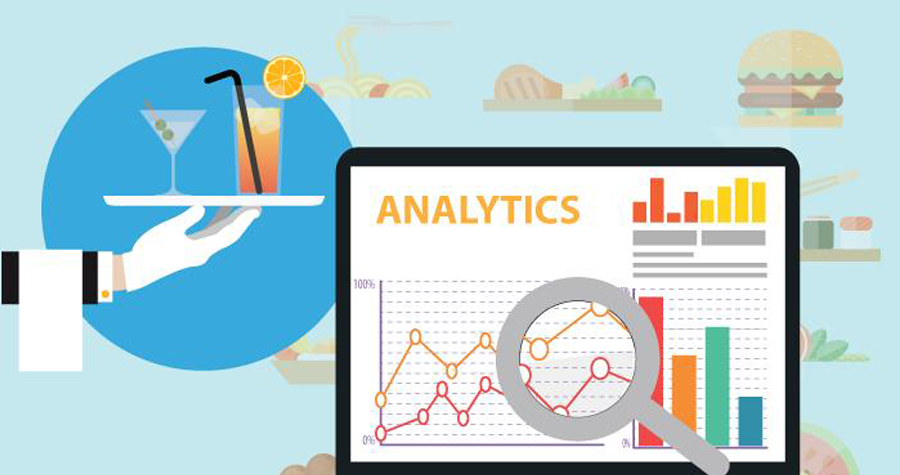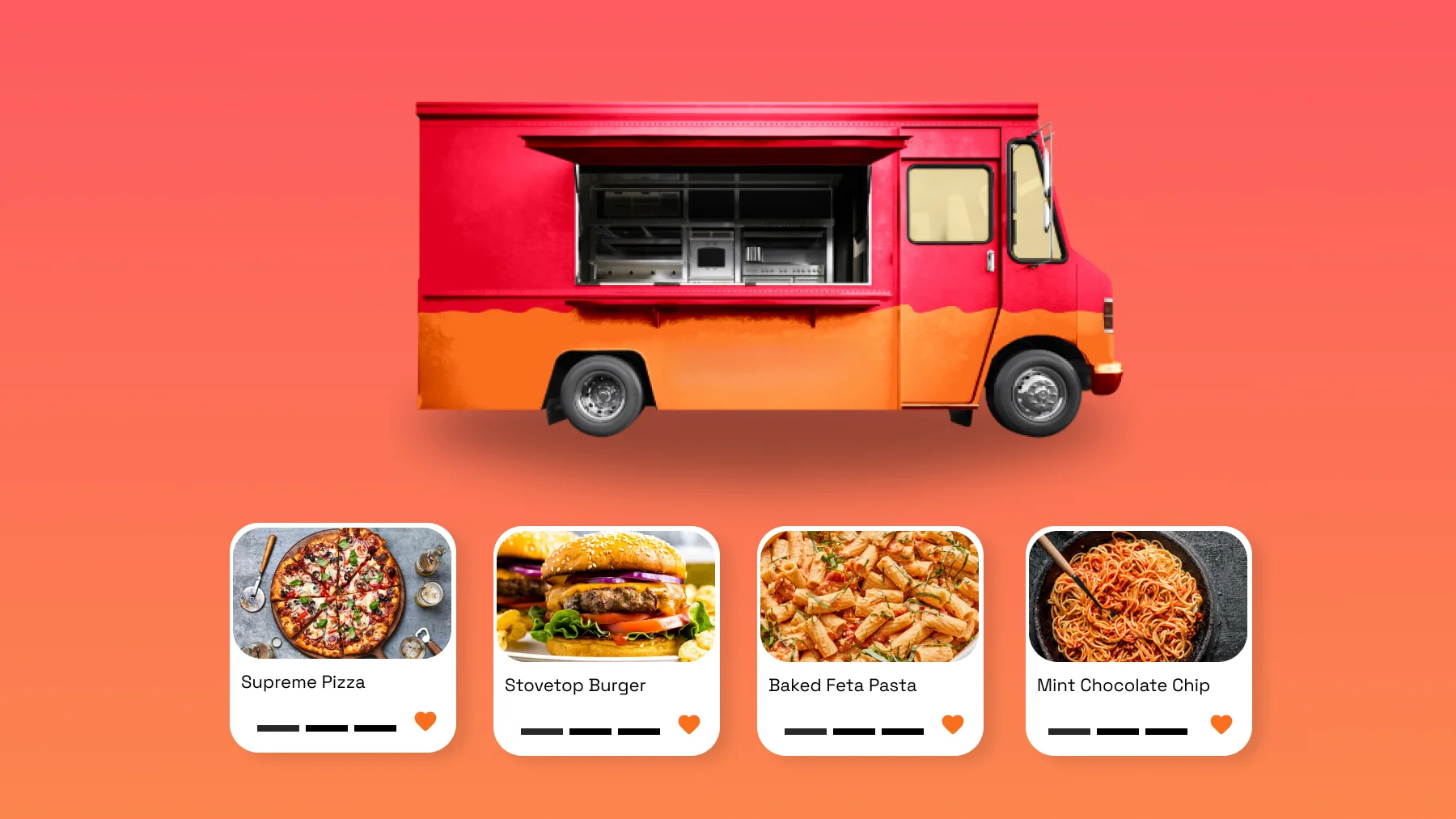Restaurant Industry Statistics That You Must Know
The restaurant industry is one that is filled with variety – in the types of restaurants and the kinds of cuisines that it serves to the world. While there are small outlets selling a highly-affordable, one dollar meal for the people, there are restaurants that serve highly expensive food for the elite diners.
So, what actually becomes the contributing factor for a restaurant’s success or failure? Why is there a great divide in success rates between various restaurants? How is the same industry so lucrative for one restaurant while it leads to heavy losses for another? What are the aftermaths of the Covid-19 pandemic on the restaurant industry?
Build for yourself a functional restaurant website using a DIY, template based restaurant website builder at an affordable price. Take your restaurant online within minutes to enjoy your profits all by yourself.
This article is a compilation of restaurant statistics that will help you get all answers to your questions. This compilation will not only inform you about the current status of the restaurant industry, but also guide you if you are a restaurateur. These statistics will help marketers, app developers and in fact, foodies too.
Restaurant Industry Statistics
The restaurant industry is a dynamic one with each day creating a diverse environment for restaurateurs to handle and adopt. Following are a few statistics about the restaurant industry for the year 2021.
- 2021 will witness a year of more sales by eating and drinking outlets in the US. Sales will increase by a staggering 10.2%. US consumers, who were denied restaurant experiences during the pandemic will spend an aggregate of $548.3 billion dollars in 2021.
- According to the National Restaurant Association, there are more than 1 million restaurants in the US that serve hungry public on a daily basis. These include high-end steakhouses to modest restaurants, sandwich bars, cafes, taverns and fast-food outlets.
- By 2028, the restaurant industry will create 1.6 million new job opportunities.
- More than 60% of US adults have worked in the restaurant industry at some point during their lifetime.
- In 2019, the market size of the global fast food and quick service restaurant was estimated at a price of USD 257.19 billion. It is expected to grow at a compound annual growth rate of 5.1% in another 6 years.
Restaurant Industry - Financial Statistics
- The restaurant industry’s projected worth was reduced to $658 billion in sales from the initial $899 billion. The $240 billion loss in sales was due to the pandemic.
- The share of the restaurant industry towards the food dollar in the US is 51%.
- Limited Service Restaurants experienced a 8.1% increase in debt between 2019 and 2020.
- Half of the (50%) limited service restaurants turned into distressed businesses due to the impact of the Covid-19 pandemic and the consequent change in consumer behavior.
Restaurant Sales - Statistics
- An average of 36% drop in sales was experienced by 87% of restaurants due to the Covid-19 pandemic.
- $ 252.82 million worth alcohol was sold in the US in 2019 alone.
Restaurant Digital (Online) Sales Statistics
- The pandemic has also given the digital sale of food a great fillip. It is now anticipated that digital sales will account for nearly 54% of the restaurant sales by 2025, which is an unbelievable 70% increase when compared to the pre-pandemic estimates.
- The global online food delivery sector was 107.44 billion U.S. dollars in 2019. Whereas, in 2023, it is expected to grow to more than 154 billion US dollars.
- During the last year alone, more than 45 million Americans made use of a food delivery app. This is a dramatic increase by 25% when compared to 2019. It is bound to increase by more than half in 2021.
- Digital food orders and delivery has grown 300% faster than dine-in since 2014.
- 34% of US consumers spend a minimum of $50 on every food order that they make online.
- By 2025, food sales via digital channels would comprise 30% of the total sales for US restaurants.
Restaurant Food Delivery - Statistics
Post pandemic, people have started craving for the convenience of food delivered at their doorstep or opting for options other than a dine-in as a precautionary measure.
- Consumers preferring a take-out from a restaurant has increased by 68% as compared to the pre-Covid period.
- 53% consumers state that takeout and delivery services are essential for restaurant experiences in the new normal.
- 60% of restaurateurs have said that the food delivery option has led to incremental sales.
- Sales through food delivery will rise from $35 billion to a whooping $365 billion globally in 2030. Thus, there will be an annual average rise of more than 20%.
- 57% of millennials say that they choose to have restaurant food delivered at home so that they can watch movies or TV at home while relishing the food.
Covid-19 impact on Restaurant Industry - Statistics
The restaurant industry was the worst hit due to the Covid- 19 pandemic. With people staying indoors and public dining restricted, this people-oriented and labor-intensive industry faced the worst times ever.
- Due to the pandemic, restaurant sales plummeted to 19.2% (from 2019 to 2020).
- According to the National Restaurant Association’s report, sales in the current year (2021), is projected to increase by 10.2%. But, this jump is definitely not sufficient for the industry to recoup from the steep losses incurred due to the pandemic.
- Restaurant sales in 2020 was $240 below the estimated levels.
- Nearly 110,000 businesses based on foodservice closed down post-pandemic.
- 72% of restaurant owners who shut operations once and for all stated that they are unlikely to open another restaurant in the years to come. Only 48% feel that they would continue in the restaurant industry in the future too.
Post Pandemic Restaurant Industry - Statistics
- A research conducted by Lisa W. Miller this April had 1,000 American respondents of age 18 and above.
- The nationwide research asked Americans about the activity that used to provide the greatest joy before the pandemic, which no longer existed in their routine.
- 81% of Americans voted for dining, making it secure the number 1 position.
- 86% of American respondents said that they would unleash the pent up demand by visiting a restaurant.
Restaurant Menu (Food) Statistics
- 79% of Millennials say that they love to experiment with cuisines from around the world
- 86% of Millennials try a new restaurant after encountering online content related to the food
- Vegan recipes are becoming increasingly popular on menus as Millennials and GenZ resort to health conscious and environment-friendly food. Therefore, mocktails and alcohol-free drinks are gaining more patrons.
- Japanese ingredients are taking the restaurant industry by storm. Not just in 2020, the trend continues to get stronger by the day. Miso, Shiso, Koji, Kimchi, Sake and more are becoming household names.
Restaurant Employment (Labor) - Statistics
- The restaurant industry employs 15.3 million people in the United States alone. This workforce accounts for 10% of the overall US workforce.
- More than 75% restaurant owners are looking for labor management tools that can be incorporated into their restaurant’s POS.
- Restaurant employees give a score of 8/10 when asked about their workplace satisfaction
- 67% of restaurant employees wish to receive paid bonuses from the management as a token of appreciation and a recognition of their hard work.
- Food service establishments completely removed 5.5 million jobs in April 2020 alone. This is three times more restaurant jobs declined than any other industry.
Restaurant Diner - Statistics
- 72% of diners place food quality over every other factor while choosing a restaurant
- 56% of consumers wish to be informed about how their personal information and data is being used by restaurants.
- 41% of consumers will start visiting restaurants when the Covid-19 situation settles down.
- 59% of US adults plan to make use of their stimulus checks on food and utilities.
- During the past one year, 32% of consumers state that their eating habits have become healthier, particularly due to the Covid-19 pandemic.
Restaurant Technology - Statistics
- 95% of restaurateurs say that their overall operational efficiency has improved with the use of technology.
- By using digital menu boards, annual store sales per unit can be increased by $16,000.
- 6 in 10 restaurant customers prefer making an order in a quick-service restaurant by using a self-service kiosk.
- Restaurant owners state that a mobile payment option is a must-have technology to create convenience for diners.
- 41% of restaurants adopt or will soon adopt the use of handheld server tablets.
Latest Restaurant Trends - Statistics
- Ever since the Covid-19 pandemic hit the world, there has been a 69% increase in No-Contact transactions.
- 21% of guests prefer making contactless payments when choosing a restaurant.
- Out of the various options available for off-premises dining, restaurant customers preferred using the drive-thru option the most. 92% of the customers said that they used the drive-thru option at least once every month. 90% opted for takeout, 79% used restaurant delivery and 53% used food delivery apps like DoorDash, GrubHub, etc.
- 75% of chefs surveyed said that the biggest food/beverage trend in the restaurant industry now is CBD infused drinks.
Restaurant Review - Statistics
- 92% consumers read restaurant reviews before deciding whether to visit it or not
- 77% diners prefer their peer restaurant reviews rather than critic reviews
- 33% of customers would never prefer to eat in a restaurant with less than four stars.
Restaurant Food - Statistics
- 31% of restaurateurs update their menu every month while 24% alter it seasonally.
- 61% of customers opt for more healthier options while dining out than they were two years ago.
- In order to reduce food waste, 28% of restaurants repurpose food scraps and leftovers, 26% offer different portion sizes and 25% engage in natural food composting.
- People love to eat breakfast all day. 55% diners say that they order breakfast items at any time if restaurants offer them such a chance.
- 51% of diners are more likely to visit a restaurant that offers environment-friendly food items.
- Current trends in the restaurant industry include using locally sourced fresh produce from local farmers, zero-waste cooking procedures, healthy meal options for kids and global flavors.
Restaurant Social Media Statistics
- More than 1 million social media mentions were made about restaurants, food and beverages. 57% of such mentions were about quick service restaurants.
- 71% of customers say that they are more likely to recommend a restaurant that responds instantly and politely to them on social media. So, restaurants that connect strongly with their diners on social media enjoy a greater advantage than their competitors.
- Gen Z and Millennials are 99% more likely to rely on and trust social media or online reviews than the Gen X or Boomers while choosing a restaurant.
LATEST BLOG POST
What Is Happy Hour? 10 Foolproof Ways to Make Your Happy Hour Successful
ShareTweetSharePin0 Shares
What does a hostess do at a restaurant? Duties And Responsibilities
ShareTweetSharePin0 Shares
200 + Cafe Name Ideas That Will Make Your Business Stand Out
ShareTweetSharePin0 Shares
How to Craft an Effective Restaurant Mission Statement: A Step-by-Step Guide
ShareTweetSharePin11 Shares
How to Create Food Truck Business Plan? Complete Guide
ShareTweetSharePin11 Shares
How to Choose the Right Restaurant Name (+ 190 Great Ideas & Examples)
ShareTweetSharePin11 Shares







